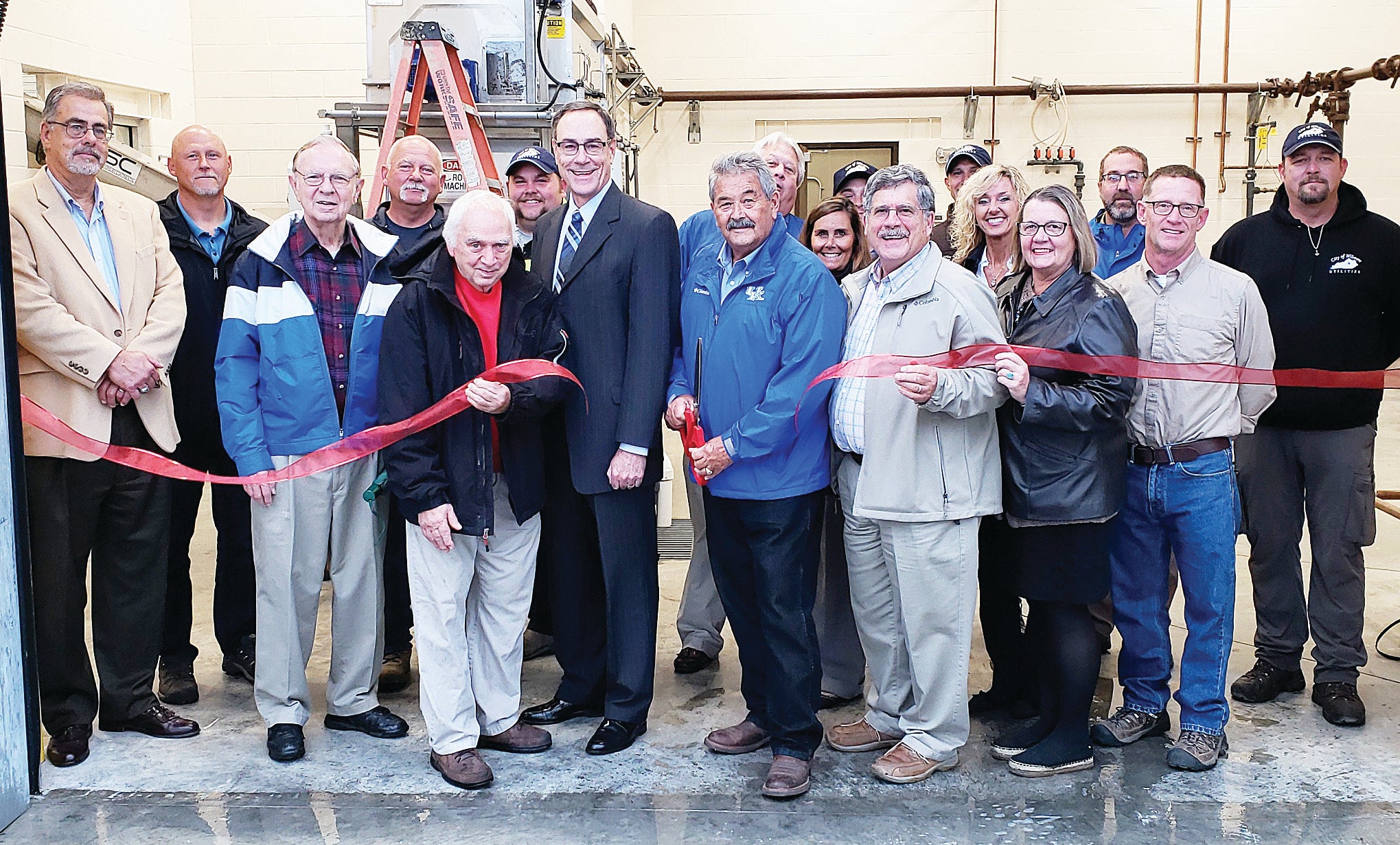Officially complete
Published 10:26 am Thursday, November 8, 2018
Wilmore wastewater treatment plant improvement project finished
Last month the City of Wilmore celebrated the official completion of its $4.2 million wastewater treatment plant improvement project.
The new facilities feature updated treatment processes and replaced deteriorated structures. This will enable the plant to meet stricter regulations and operating permit requirements, according to Dave Carlstedt, Director of Public Works in Wilmore.
“We are thankful to Dave Carlstedt, his utilities team, city council and design and construction firms for completion of this WWTP project,” Wilmore Mayor Harold Rainwater said. “This leading-edge process of treating waste water will produce the highest environmental return available and save thousands in tax dollars in efficient operation.”
The project took four years from conceptualization to completion, Carlstedt said. Planning began in 2015, additional funding and design took most of 2016, construction began in 2017 with the completion finally taking place this fall.
Three components were responsible for driving the wastewater treatment plant project according to Carlstedt.
“One, an everyday by-product of wastewater treatment is ‘sludge’ and our plant had no ability to process its own sludge,” Carlstedt said. “We were paying a contractor to ‘press’ and remove sludge from the plant. That is not a good long-term plan for operational efficiency. Two, the treatment plant had a 50-year-old fabricated digester that was showing signs of metal fatigue. That 500,000 gallon storage and processing tank was critical to the plant and needed to be replaced. Three, our plant was not able to remove the amount of phosphorous that was going to be required when our operating permit from the state is renewed in 2019. We needed the capability and sludge storage capacity to meet the expected regulatory demand for phosphorous removal.”
Funding came from $60,000 in local contributions from citizens, businesses and institutions, along with the work of the Bluegrass Area Development District and Rural Development staff. The City of Wilmore, Carlstedt said, was able to secure two grants to pay for 40 percent of the project which included a $1 million CDBG grant and a $625,000 Rural Development grant. Carlstedt said the balance will be paid by the City of Wilmore with low-interest financing provided by Rural Development.
“We constructed two new concrete tanks for digestion, which is where the sludge goes until it is ready to be dewatered,” Carlstedt said. “Additional phosphorous removal will increase our annual sludge production, so it will be imperative that we can remove sludge as often as we need to and whenever we need to according to our operational needs. That will keep us in compliance with state and federal regulations. The most significant new treatment process we now have is the capability to dewater our own sludge. We have new chemical feed systems, new blowers, new aerators and new pumps to make healthy sludge. We also have a brand new electrical service into the plant, a new shop area and a new building for screenings.”
GRW Engineers and Dugan & Meyers provided the design, engineering and construction services for Wilmore’s plant, Carlstedt said. Wilmore intends to have an open house for the community in the spring of 2019.
So, what does all this mean for the City of Wilmore?
“Regulatory compliance is key,” Carlstedt said. “What this all means is the city is in a very good position to meet and exceed the required treatment parameters for Wilmore’s wastewater plant. From a capital planning perspective, we eliminated all of the oldest structures and features of the plant. Now, nothing in the plant is more than 30-years-old. The new equipment is energy efficient and will require only routine maintenance for years. While we did not add any additional treatment capacity, the plant is in very good shape to take care of all of Wilmore’s current customers.”



